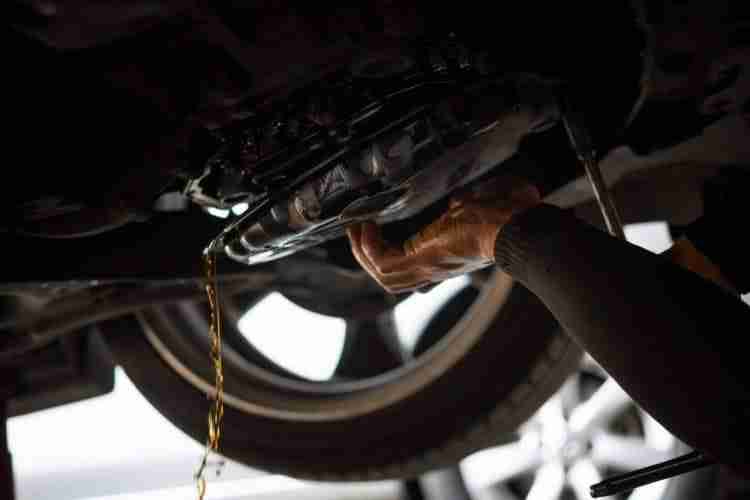Can Changing Transmission Fluid Be Bad?

As a car owner, you might be wondering all about the do’s and don’ts of car maintenance, and you definitely won’t be the only one.
When it comes to changing transmission fluid, everyone seems to have a totally different opinion, and we are going to get to the bottom of it in this article. If you want to know if changing your transmission fluid can be bad, we will put your mind to ease.
There are lots of things that you should and shouldn’t do according to experts when it comes to transmission fluid, but there are some things that you should regularly practice, and some things that you should know just in case the situation arises where you do need to change the fluid.
We are going to walk you through everything that you need to know about changing transmission fluid, so you can be better prepared.
What Is Transmission Fluid?
If you aren’t already aware, but you have heard the term floating around, a transmission actually refers to the gearbox that uses gears to provide speed and torque conversions that come from a rotating power source, like the engine, to another device, in this case, the wheels.
Transmission fluid is used in order to lubricate each of the components within the car’s transmission to get the best possible performance.
There are a few different types of transmission fluid, and a variety of different types are used for different transmissions. The transmission of your can will either be manual or automatic, and automatic cars will use what is called automatic transmission fluid.
Essentially, the type of transmission fluid that you will use for your car will depend on the type of transmission within the car that you drive. This will be different for both manual and automatic cars.
Why Do You Need Transmission Fluid?
The reason that your car needs transmission fluid is that, without it, your transmission will experience significant levels of wear due to a lack of lubrication.
You will need the proper levels of transmission fluid to make sure that the components within the transmission do not break down and wear against each other.
If this wear does occur, then it will make it much more difficult than usual to shift the car. That seamlessness will disappear, and it will stick and get jammed instead. If you are having any problems while shifting, then you should check your transmission oil levels to see if that is the problem.
We have already mentioned that the primary function of the transmission fluid is to lubricate all of the components within the transmission, but it does also have some other handy uses.
The first of these is that it will help to clean the metal and protect it from wear and damage. It can also work to enhance cooling functions and help to reduce higher operating temperatures that can cause damage. Finally, it can also help to increase rotational speed and temperature range.
Do I Need to Change the Transmission Fluid?
While transmissions are designed to be able to operate under higher temperatures, constant overheating can work slowly to break down the transmission fluid.
This actually means that, though many people might disagree, you will need to change your transmission fluid at some point, as it will not last forever.
You will need to check the manual to find out all about the recommended change intervals when it comes to the specific car that you own, but it will need to be changed at some point.
Flush or Change?
When it comes to the time that you need to change your transmission fluid, you will have two different choices. You can either choose to completely flush the fluid or simply change it.
When you change the fluid, it just means that you will need to drain all of the old fluid from the transmission pan and refill it with new and fresh fluid.
If you are going to flush the fluid, then this means that you will need to take out the old oil from the pan, the cooler lines, and from every component of the transmission.
If you are simply changing the fluid, then it is highly likely that there will still be quite a lot of old fluid that will be left behind in the gearbox. However, when you choose to flush the liquid, you will be getting rid of all of the old fluid, leaving nothing behind.
Essentially, it is up to you to decide which one of these that you want to do, but if you do not feel confident enough to flush the fluid, then you can choose to just change it.
Otherwise, you could just take it to someone who is trained to do so, instead of trying to do it yourself. The last thing that you want to do is mess up and for it to all go terribly wrong.
If you regularly keep up with car maintenance by yourself, and you feel that you have all the right knowledge to do it, then you can always do this yourself.
Can Changing Transmission Fluid Be Bad?
You might change your transmission fluid without any problems at all, but not everyone will be so lucky. Like with anything to do with car maintenance, things can go wrong all the time.
If everything goes well, then you have changed your transmission fluid and nothing is broken or damaged. However, it can definitely go bad if you aren’t super careful.
There is actually quite a lot that can go wrong when you are changing your transmission fluid, which is why it is really important to take your time to make sure that you are doing everything as you should.
Transmission oil is really thin, which makes it more likely to move around all the components in the transmission. When the oil gets older, it thickens and moves around this, which can cause friction that actually helps keep the clutch working.
So, when you change out the oil with new in the worn-out transmission, the clutch can start to slip, or you might struggle to change gears.












No Comment